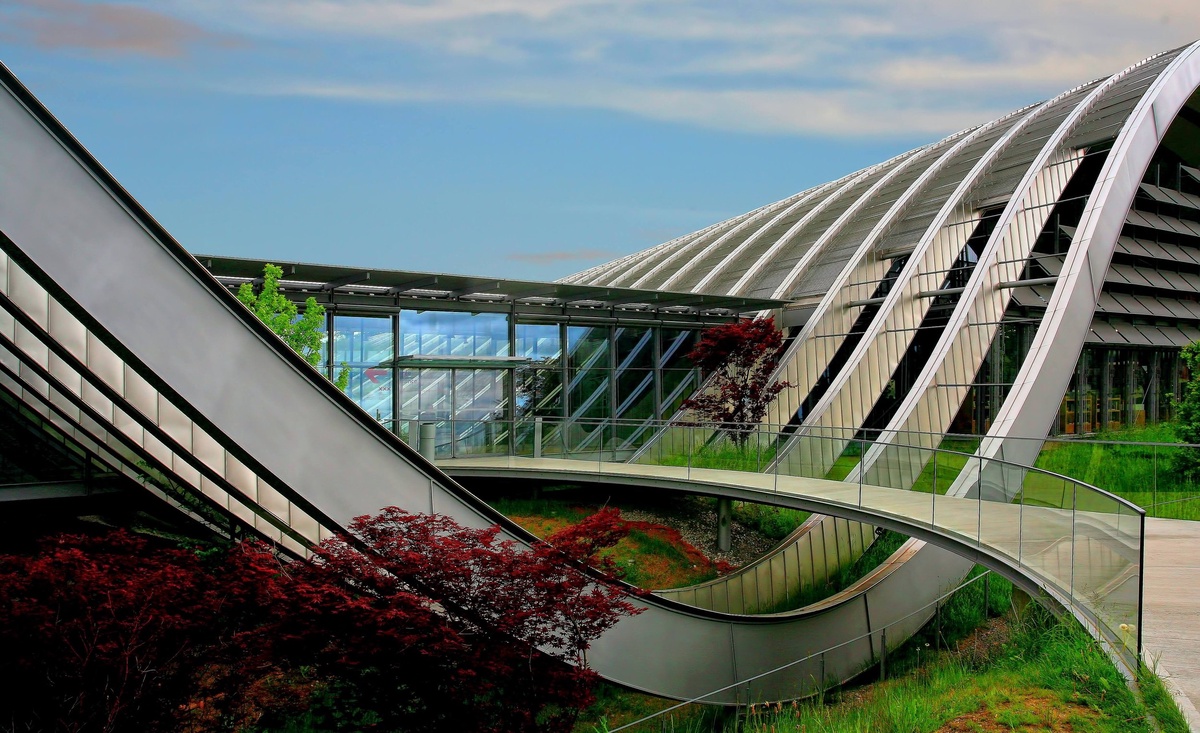Sustainability is becoming a need in the modern day rather than just an option. The built environment carries a heavy weight, making a substantial contribution to global carbon emissions, resource depletion, and trash production. In order to mitigate these negative consequences, architects today have a crucial role to play in promoting sustainable architecture design solutions. In addition to being visually beautiful, our designs must also be ecologically sound, demonstrating a strong commitment to the welfare of our world and future generations.
Now, we will explore six sustainable design solutions that architectural design services should prioritize. It will help to create a more environmentally friendly and socially responsible built environment.
Sustainable Design Solutions:
Passive Design Principles:
Passive design principles are a fundamental aspect of sustainable architecture. They involve designing buildings that maximize natural resources like sunlight and ventilation. This helps to reduce the need for mechanical heating, cooling, and artificial lighting. Key strategies include:
a. Orientation- Properly orienting a building to take advantage of the sun's path can minimize energy consumption. South-facing windows can capture winter sunlight, reducing heating needs, while shading devices can prevent overheating in summer.
b. Thermal Mass- Incorporating thermal mass materials like concrete or stone into a building's structure helps stabilize indoor temperatures, reducing the need for heating and cooling.
c. Natural Ventilation- Designing for cross-ventilation and incorporating operable windows and vents can promote natural airflow, reducing the need for air conditioning.
By implementing these passive design principles, architects can create buildings that are comfortable, energy-efficient, and environmentally friendly.
Sustainable Materials:
Selecting sustainable materials is crucial for reducing the environmental impact of construction projects. Architects should prioritize materials that are:
a. Locally Sourced- Choosing materials sourced from nearby suppliers reduces transportation-related carbon emissions and supports local economies.
b. Recycled or Reclaimed- Incorporating recycled or reclaimed materials can reduce the demand for virgin resources and minimize waste.
c. Low-Impact- Opt for materials with a lower environmental footprint, such as those with low VOC (volatile organic compound) emissions or FSC-certified wood.
d. Durable- Long-lasting materials reduce the need for frequent replacements, decreasing overall resource consumption.
Architects should work closely with clients and suppliers to identify sustainable material options that meet the project's specific requirements.
Energy-Efficient Systems:
Energy-efficient systems play a pivotal role in reducing a building's carbon footprint. This includes the selection of energy-efficient HVAC (heating, ventilation, and air conditioning) systems, lighting fixtures, and appliances. Strategies to consider include:
a. LED Lighting- Replacing traditional incandescent lighting with energy-efficient LED fixtures can significantly reduce energy consumption and maintenance costs.
b. Solar Panels- Integrating photovoltaic solar panels into a building's design can generate renewable energy and reduce reliance on grid electricity.
c. High-Performance Insulation- Installing high-quality insulation materials can improve the building's thermal performance, reducing heating and cooling needs.
d. Smart Building Technologies- Incorporating smart building technologies, such as occupancy sensors and energy management systems, can optimize energy use and improve occupant comfort.
By prioritizing energy-efficient systems, architects can help their clients save on operational costs and reduce their carbon footprint over the building's lifespan.
Water Conservation Strategies:
Water scarcity is a growing concern in many regions, making water conservation a critical aspect of sustainable design. Architectural design services should consider the following water-saving measures:
a. Low-Flow Fixtures- Specify low-flow faucets, showers, and toilets to reduce water consumption in both residential and commercial buildings.
b. Rainwater Harvesting- Design rainwater harvesting systems to collect and store rainwater for landscape irrigation and non-potable uses.
c. Greywater Recycling- Implement greywater recycling systems to treat and reuse water from sinks and showers for non-potable purposes like toilet flushing or irrigation.
d. Drought-Tolerant Landscaping- Select native and drought-tolerant plants for landscaping to reduce irrigation needs.
By integrating water conservation strategies into architectural design, architectural design services can contribute to the responsible management of this precious resource.
Green Roofs and Living Walls:
These green roofs and living walls are innovative sustainable design solutions that offer multiple benefits. Insulation, a decrease in stormwater runoff, and improved air quality are all benefits of green roofs. Living walls, and vertical gardens that can be integrated into building facades, also contribute to better air quality and aesthetics. Additionally, both green roofs and living walls enhance biodiversity and promote a connection with nature in urban environments.
Architectural design services can incorporate these features into their designs to create more sustainable and attractive buildings while mitigating the urban heat island effect and reducing energy consumption.
Adaptive Reuse and Renovation:
One of the most sustainable practices in architecture is the adaptive reuse and renovation of existing buildings. Rather than demolishing and building anew, architectural design services can repurpose and renovate older structures. This approach not only preserves the cultural and historical significance of these buildings but also reduces waste and energy consumption associated with new construction.
When undertaking adaptive reuse projects, architectural design services should focus on enhancing energy efficiency, improving indoor air quality, etc. It's a sustainable win-win, preserving the past while planning for a greener future.
To Conclude:
As architectural design services providers, we have a profound impact on the environment and the well-being of communities. With sustainable design solutions such as passive and active sustainable designs, sustainable materials, energy-efficient systems, etc., architectural design services can create buildings that are not only visually stunning but also environmentally responsible.
These sustainable design strategies not only reduce the carbon footprint of our projects but also contribute to the overall health and resilience of our communities. With the right and top data center design company, you can enhance the working experience of everyone.
As we move towards a more sustainable future, architectural design services must continue to innovate and advocate for sustainable design practices to leave a positive legacy for generations to come.


No comments yet